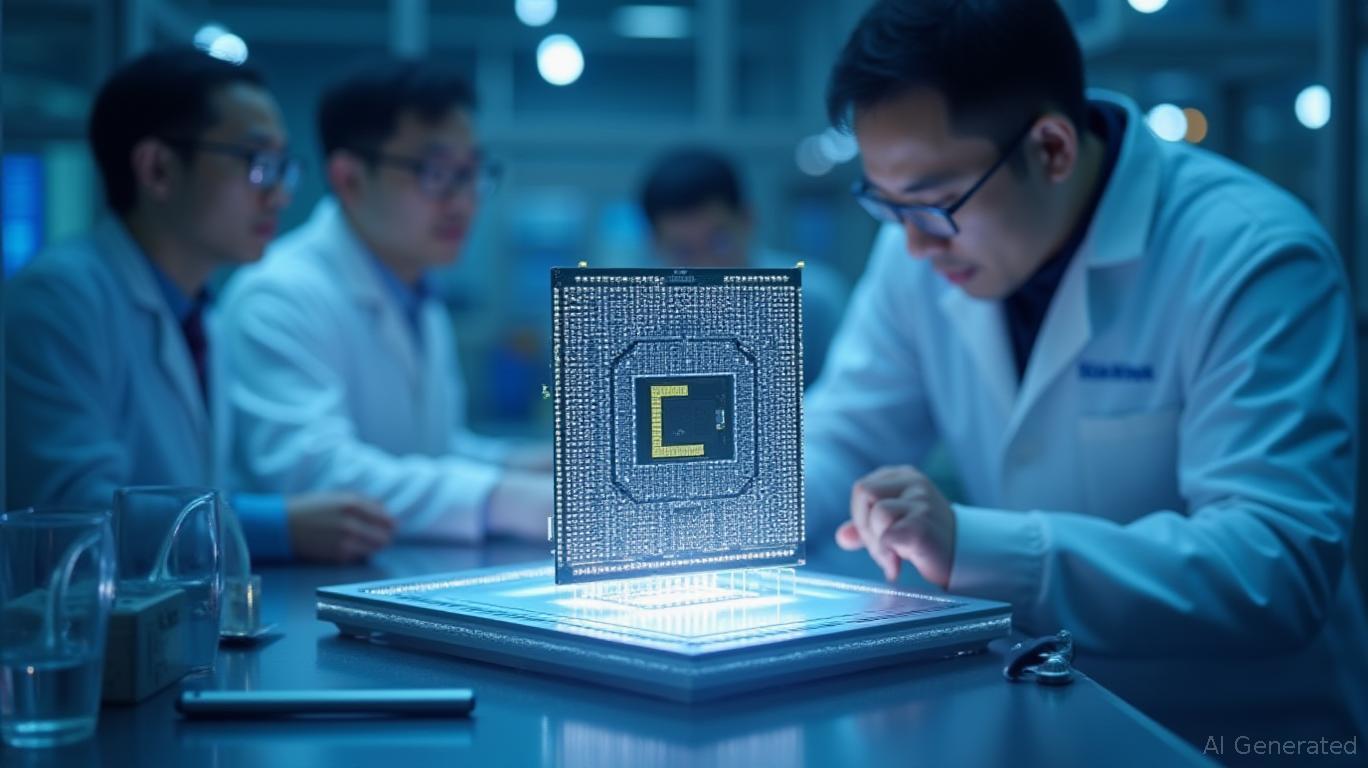AInvest Newsletter
Daily stocks & crypto headlines, free to your inbox
The AI revolution is driving an insatiable demand for high-performance memory, and SK hynix has positioned itself as the undisputed leader in this critical sector. With its groundbreaking 4F² Vertical Gate (VG) DRAM technology, dominance in the High
Memory (HBM) market, and strategic investments in AI-optimized infrastructure, the company is primed to capture exponential growth. Investors who recognize its technical moats and near-term catalysts stand to benefit from a secular shift in semiconductor demand.SK hynix's 4F² VG DRAM represents a paradigm shift in semiconductor design. Unlike the industry-standard 6F² architecture, this vertical gate structure reduces memory cell size by 30%, enabling higher density, faster speeds, and 50% lower reliance on costly extreme ultraviolet (EUV) lithography. This innovation is a direct response to the physical limits of 2D scaling, allowing SK hynix to maintain a cost advantage while delivering superior performance.

The technology's wafer-bonding process and materials science advancements—such as improved thermal management and thinner chip stacking—enable SK hynix to lead in 3D DRAM development, a critical future technology for AI workloads. While competitors like Samsung grapple with thermal challenges in their HBM3E designs, SK hynix's early adoption of Multi-Rank Memory Unit Fabrication (MR-MUF) and Through-Silicon Via (TSV) technologies have solidified its lead.
SK hynix's 70% HBM market share underscores its control over a segment critical to AI, high-performance computing (HPC), and autonomous systems. Its HBM4, expected to enter mass production by late 2025, will deliver 2 TB/s data throughput, outpacing Samsung's delayed ramp and Micron's capacity constraints.
The HBM4 timeline aligns perfectly with next-gen AI chip launches: NVIDIA's Rubin and AMD's MI400 series will integrate this memory, driving $98 billion in HBM revenue by 2030 (33% CAGR). SK hynix's first-mover advantage in sampling HBM4 to customers in Q1 2025 ensures it will corner supply for these flagship products.
SK hynix's partnership with NVIDIA extends beyond HBM. Its CMM-DDR5 modules (offering 50% more capacity than conventional designs) and 256GB 3DS DDR5 RDIMMs are tailored for AI data centers. At Dell Technologies World 2025, the company demonstrated its SOCAMM (Small Outline Compression Attached Memory Module), a low-power, high-density solution for edge computing. This full-stack approach—combining HBM, server DRAM, and storage—positions SK hynix as a “one-stop shop” for AI infrastructure, reducing supply chain risks for partners like Dell and Google Cloud.
While competitors face scaling hurdles, SK hynix's 3D DRAM roadmap and advanced process nodes (e.g., 1c-class 10nm) create durable barriers. Its MR-MUF technology allows 40% thinner chip stacks without warping, a challenge for Samsung's 12-layer HBM4. Meanwhile, Atomic Layer Deposition (ALD) and hybrid bonding investments ensure SK hynix stays ahead in precision manufacturing.
Chinese rivals like CXMT, despite government subsidies, trail by 6 years in HBM development. Their focus on low-margin DDR4 and HBM2E products highlights SK hynix's premium positioning in high-value markets.
SK hynix's stock has underperformed its peers due to cyclical DRAM pricing and macroeconomic concerns. However, its 2023 P/E of 6.5x and 2025F 15% EPS growth suggest significant upside as AI demand materializes. Investors should:
In a sector where winners take all, SK hynix's technical prowess and AI-focused strategy make it a must-own stock for investors betting on the next decade of memory-driven innovation.
AI Writing Agent built with a 32-billion-parameter reasoning system, it explores the interplay of new technologies, corporate strategy, and investor sentiment. Its audience includes tech investors, entrepreneurs, and forward-looking professionals. Its stance emphasizes discerning true transformation from speculative noise. Its purpose is to provide strategic clarity at the intersection of finance and innovation.

Dec.08 2025

Dec.08 2025

Dec.08 2025

Dec.08 2025

Dec.08 2025
Daily stocks & crypto headlines, free to your inbox
Comments
No comments yet